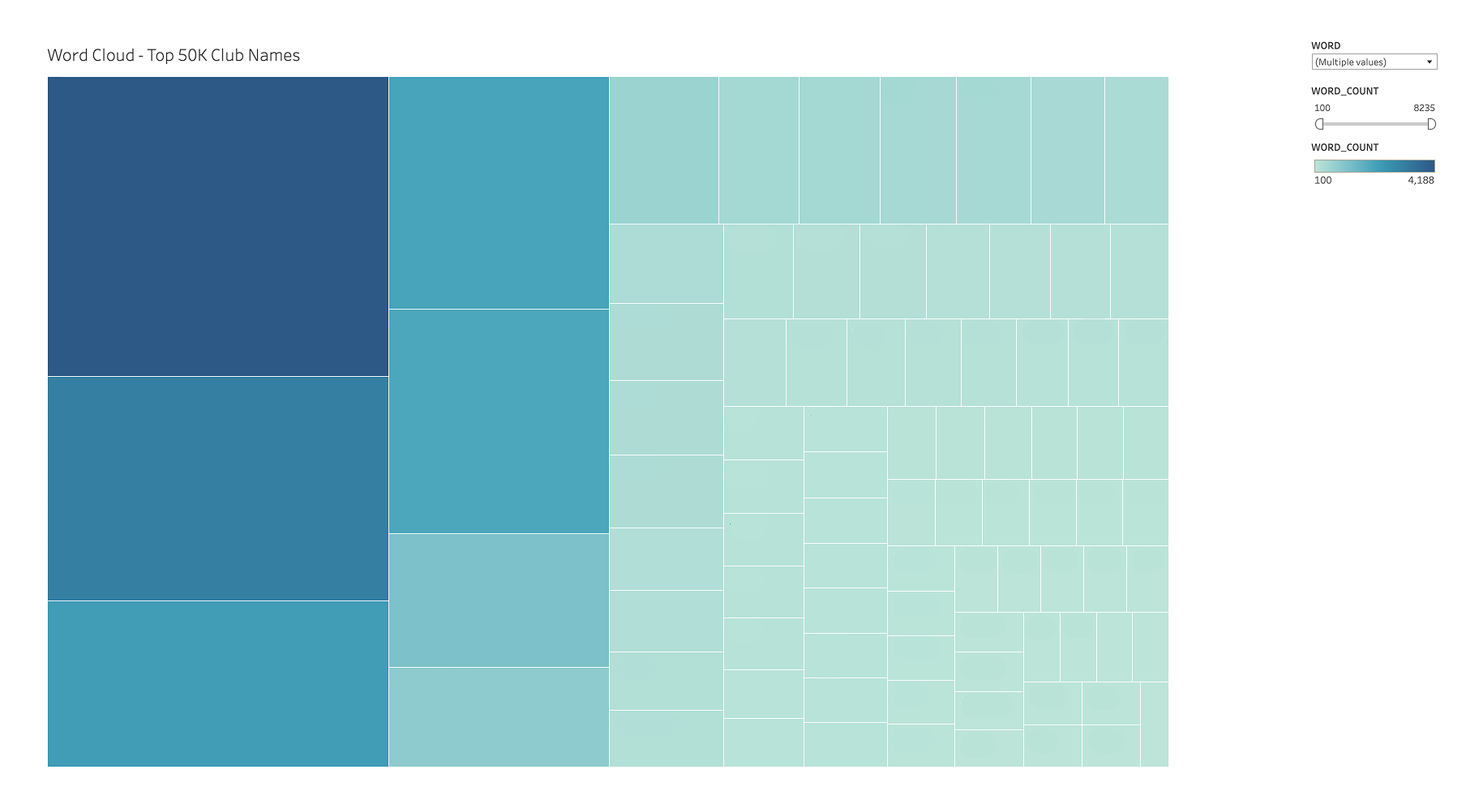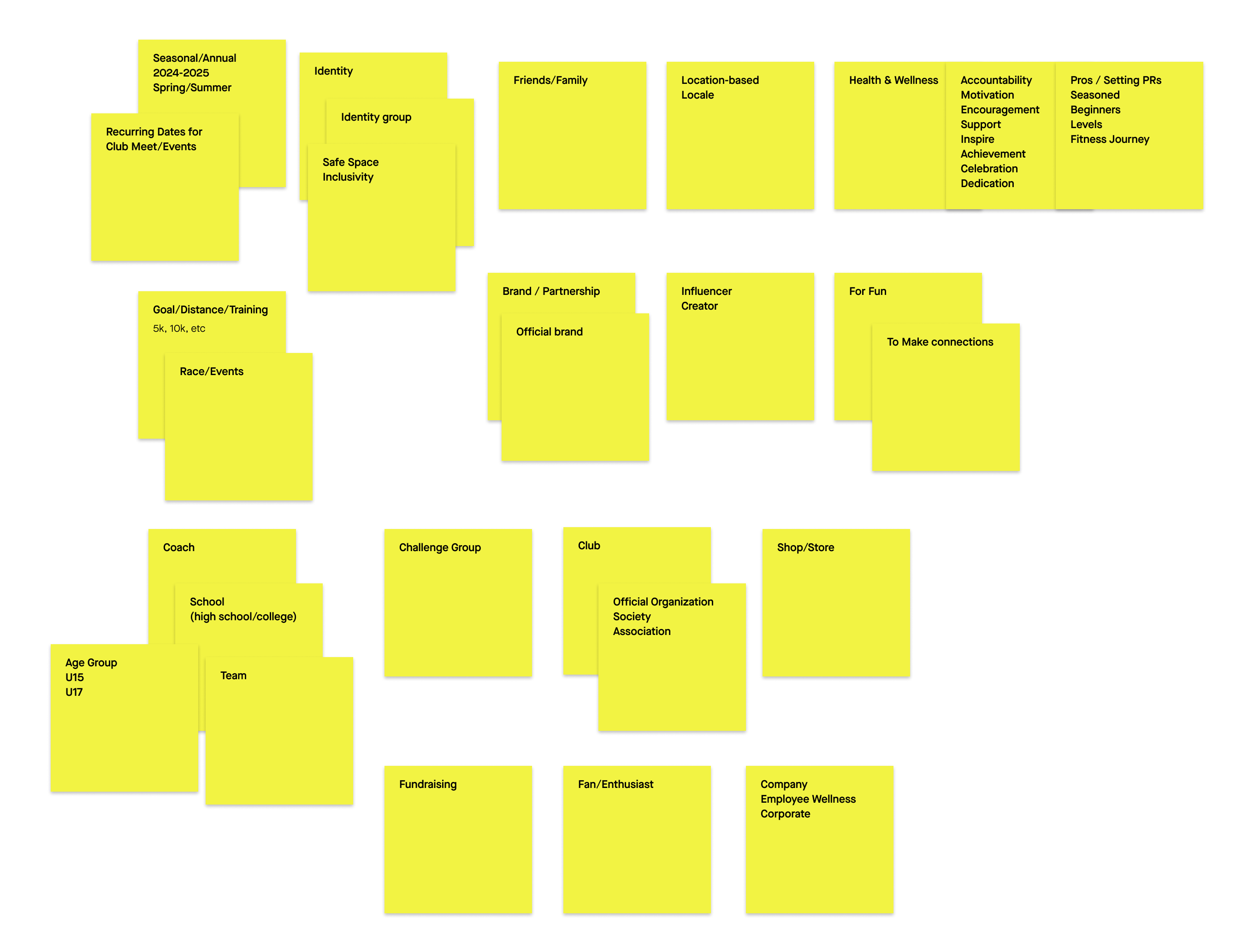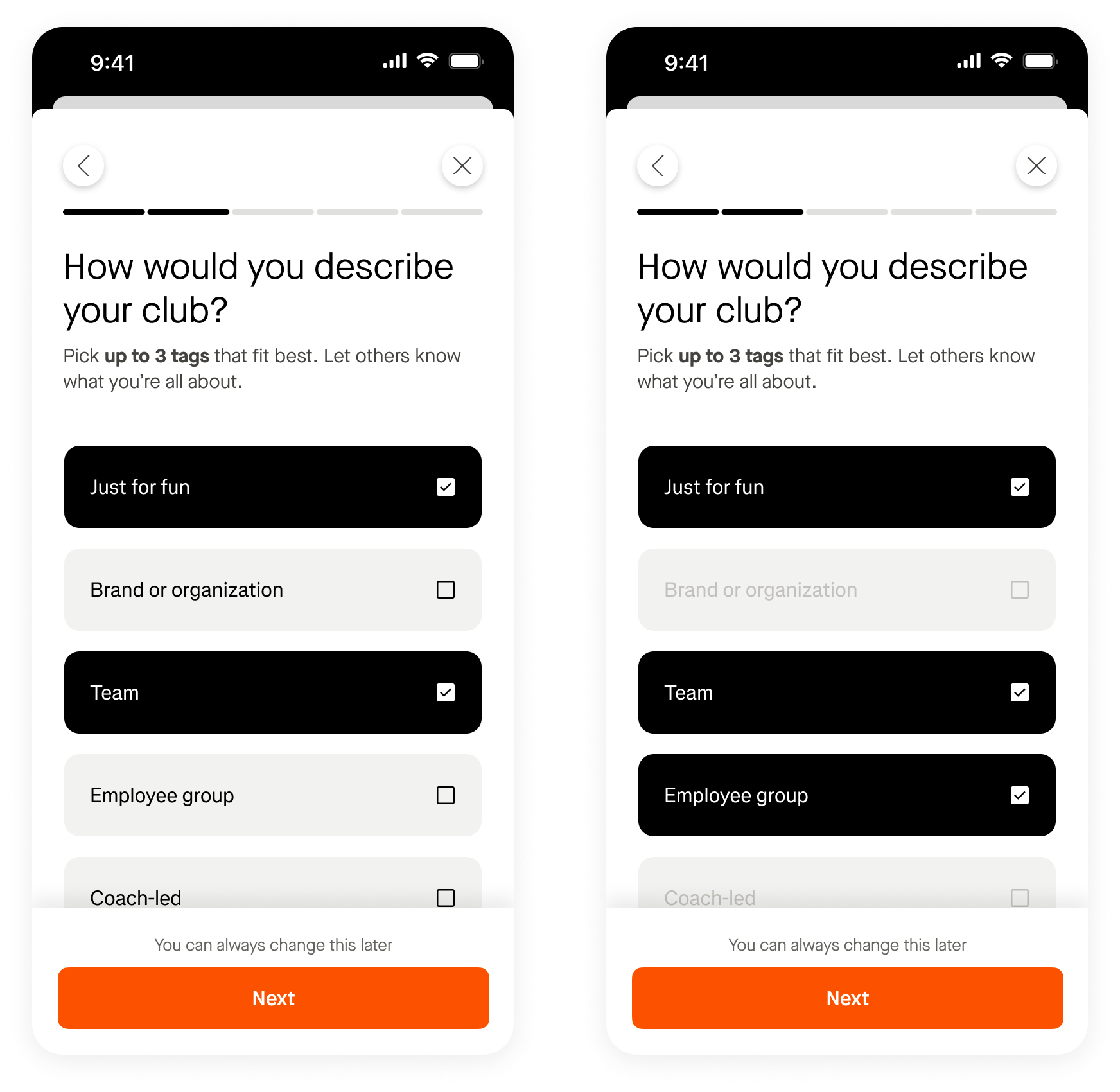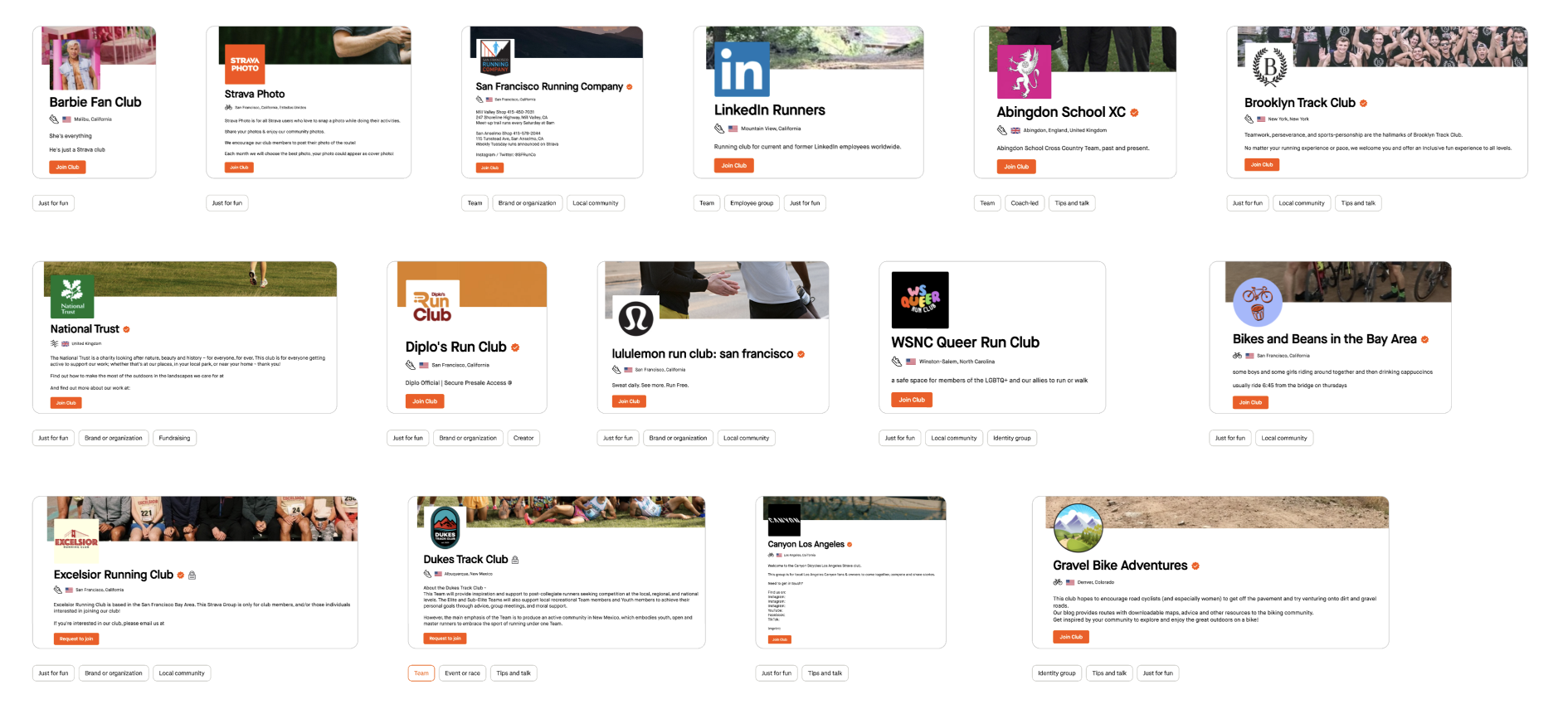Using data to strategically modernize club types in Strava.
Working with the Strava Community Engagement team (2024)

What is Strava:
Strava (2009) is an activity tracker with social features.
Context:
Strava is bringing club creation to mobile. I inherited the project before finalization, and directed the team to update outdated club categories to improve the user experience.
Role:
Senior Product Designer
Involvement:
Auditing and design, Mobile platforms
Timeline:
1-2 weeks
Results:
Increase in club creation, club activation
-
How might Strava expand club types to appeal to both broader and more specific audiences?
-
How do I modernize a decade-old system seamlessly?
While this isn’t the most glamorous visual work, it’s effective for the long-term strategic vision of clubs on Strava.
-
Identify the shortcomings of the existing club types
Initially, there were 5 types (Club, Shop, Company, Racing Team, Other), but 85% of clubs on Strava fell into one type: “Club.” This suggested that “Club” was too vague—it became a catch-all for everything that didn’t fit the other 4 categories.

Clubs could only pick one type when they were created. So if a club fit into more than one category, they had to choose whichever one seemed closest. This is why most clubs just went with “Club” as a general option.
We received the question, “What should I select to talk to other bike gear heads?” but couldn’t align it with any current types, creating a blocker.
My intuition was that clubs and communities want to differentiate by goals, membership, and specificity. To foster higher-quality clubs, Strava needed to make club types more specific and appeal to a broader audience.
-
Pull in teammates to brainstorm new categories that could fill in these gaps.
I reached out to active club members in our internal Slack channels. This gave us a starting list of clubs and types to work from, helping us think beyond the existing categories.
-
I worked with my Analyst to figure out how we could pinpoint these types with data.
This approach seemed unclear, so I suggested we create a word map using the top club names and descriptions across all languages. My Analyst set up a Tableau page for me to explore. With this tool (and Google Translate) I documented the most common words across all languages.

-
Brainstorm with my Copywriter and Researcher.
Based on the word cloud results, we tried to expand and reword how these categories would work together, limited to 12 types. The names needed to be distinct enough as to not confuse with each other, and clear enough so that they could be understood at a glance.

-
Club types have gradually diversified without disrupting existing clubs.
This more granular categorization improves search and discovery, increasing the chances that users find clubs matching their interests.

The Challenges.
-
The hard part was proposing the feature should allow more than 1 club type per club.
It was technically heavy and would change product roadmap to support having multiple club types.
To convince our team and leadership, I stress-tested these types with real hybrid clubs. I presented a list of verified and unverified clubs, matching each with 1–3 types. This helped product managers and leadership see how the system would work in practice and confirmed we were aligned.
In order to compromise with the technical timeline, it was important to create 1-to-1 mappings of existing club types to match with the new list. The existing clubs wouldn’t have to take on any new club types either, which reduced the work down to more of a string change with additional list items.

The Team
- Zack Nassar Researcher
- Eddie Carrillo Copywriter
- Seth Winger Data Analyst